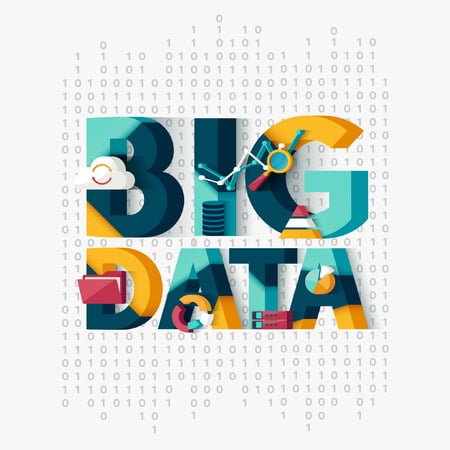More Small Tips on Big Data
Big data is massive. I have headed a previous article with the same and with 10 small tips to work towards making that manageable. More recently, much encouraged to see the CIPD putting forward the people analytics vision from leaders in the field, I put to you the key questions that should be continuing conversation for business leaders and for HR thereby.
We have a big industry problem with people analytics or People Science[i], which is about accessibility. The data is so vast and the end-goal so visionary that the thing feels unmanageable. In the overwhelming majority of organisations, we need the road-map plotted that starts with where we all are right now.
Here those same 10 steps I stick by, adding 10 more ways in which you can inch towards insight from your own “big data”.
20 tips to make insights in reach; big data bite-sized [ii].
- Develop key stakeholder buy-in. Examine the business interest in terms of relationships and focus HR on creating senior champions with vested interest in the analytics value-add.
- Win conviction by using precise example and story-telling. Show, with what-if examples of data how measurable things could change and support this with a narrative. Pick something small but precise.
- Ask leaders about the key business questions that should lead your Insights focus – if in doubt go for metrics that relate to costs. Recognise that People Science is led by business, not by fishing (drowning?) in data.
- Recognise and learn about a new set of skills associated with big data –for example the Data Scientist or the People Analyst, but variously termed so far. Understand the skills specification you need in months ahead.
- Decide if an aspiration is for higher-performing analytics capability built inhouse or whether you should adopt external partners. The rare breed who combines the business consultancy with BI and analysis skill you may need to buy in.
- Start by working with colleagues on common internal data standards to avoid manual interventions – this can be called your taxonomy. Classify meaning and use of people data you use.
- Next up assign an ownership for each piece of data – even if not yet one master source, then who is the master owner?
- Before you start on maturing your capabilities to use your big people data, don’t forget to benchmark the “before” ability that you have to work with insight. This likely means just working out how much time it takes your team to go not-very-far.
- Do not underestimate the immediate value of developing straight-forward drill-down dashboards to offer people managers. This may not be predictive but the visualisation makes data accessible and exciting.
- Remove the ability for self-service users to export dashboard data! Make sure data starts to correct at source.
- Understand the different types of technology available, from classic HR solutions, through BI products, to true analytics, as well as visualisation tools or statistical modelling. Consider which you should invest in first, if at all, in the context of your priorities, capabilities and potential for your current tech.
- Make sure you are making the most of your core HCM system to capture new data that you need. Use development of forms, self-service pages and processes (e.g. on- and off-boarding) to fill in any blanks in your available knowledge.
- Keep focus outside of HR, looking to measures that are about our organisation and our clients. Traditional HR measures take us little forward where there is new potential. Do not aim to measure operations of the HR team only (or with prominence)
- This means using more than one data set. Expect big data to expect you to work out different sources of relevant information to pull together in drawing insights. For example, writing on EBHR points to 4 sources to seek to triangulate.
- Cross-functional working (and see tips 4,5 and 6) is key on people data. Be ready to work closely with Finance, IT, Sales, risk functions for starters. Big data requires thinking around as many verticals as you suspect create limits.
- As human thinkers look for blind spots in your ask of big data – thinking laterally will help “mine” for results that really offer something new. This is hard to understand. In practice, I’m suggesting you look to the places you don’t have data (such as those who fall out of a system or process rather than the stayers, or those who don’t engage in feedback). (and see tip 12)
- Start small but go deep. It is better to identify one or two key target areas to probe the wealth of data than to take a scatter-gun approach and blindly expect to hit the jackpot insight which will take your practices further.
- You probably need tech tools to “do big data”. Whilst we can apply some insightful thinking to our people observations, the possibility of big data means extending beyond our brain’s grasp. But never (until AI is thoroughly transformative?!) remove the human value-judgements. Stress this message.
- HR have an extra job to attend to the ethics and implications of big data use. Firstly, there are the hard facts about security and compliance. Secondly there are questions of culture and sensitivities in the use of personal information.
- Understand the sales pitch for people data! It is now proven that people and performance (including tangible measures of talent and engagement) add value to those client-centric KPI’s. Once you have champions, work together on the next step business case.
- My bonus tip or 2: I recommend getting your head around what an algorithm is.
Understand its value but also its limitations. Understand that to a degree you can DIY it with your own thinking. If you’re trusting in rules, which I recommend you do, then pick the designers right! Likewise, do work with partners as you’ll likely need some expertise you cannot afford to employ, but pick carefully and go foremost for continuity – consultants need to “get” you and your people data.
A learning point for me in recent months of talking to client organisations and working with partner product suppliers and independent experts, is that these simple start-points apply to almost all in the here-and-now. Size does matter on analytics: it matters because of volume of data points and affordability of investments. It matters less than you might suppose when it comes to people analytics maturity. Be not too afraid that everyone else is better than you!
If you’d like more explanation behind my points then do contact me. Or get in touch with practical insights you’ve drawn in your analytical start.
You can also find these tips, if you prefer them in mini and more shareable with colleagues, @KateWadiaP3C on Twitter.
With thanks and acknowledgements also to all those presenting at the CIPD Analytics Conference in November 2017 for inspiring ideas and to HR Zone[iii] partners in sharing of our Phase 3 support for the analytics journey.
[i] Sage People www.sagepeople.com are adopting this terminology and it’s in my view just the right message
[ii] We like bite-sized at Phase 3 Consulting. For us it means all that manages volume with a modest pragmatism and with expertise, to get results
[iii] www.hrzone.com
Image Credit: 123rf.com
Please enjoy additional content via our Phase 3 Insights library



